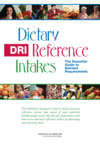In 2008, more than 33 million people across the globe had HIV/AIDS, 67 percent of whom were in Africa. In addition, more than 90 percent of the 2.7 million new infections reported that year occurred in Africa, and only half of Africans who should have received antiretroviral therapy (ART) according to World Health Organization guidelines then in place were treated. By 2020, the number of infected people in Africa is estimated to grow to over 30 million, with just 7 million of the approximately 12 million who should be treated under current guidelines likely able to receive ART, according to a new report released by the Institute of Medicine.
Preparing for the Future of HIV/AIDS in Africa: A Shared Responsibility says that the number of people infected with HIV/AIDS in sub-Saharan Africa is projected to far outstrip available resources for treatment by the end of the decade, forcing African nations to make difficult choices about how to allocate inadequate supplies of lifesaving ART. The report calls for a renewed emphasis on reducing the rate of new infections, promoting more efficient models of care, and encouraging shared responsibility between African nations and the U.S. for treatment and prevention efforts, which could greatly improve prospects for the future.
The global AIDS pandemic calls for action beyond Africa, too. There are many countries in Eastern Europe, the Commonwealth of Independent States, and Asia where the sharing of contaminated injecting equipment is the primary mode of HIV transmission. In some cases, HIV is spreading rapidly from injecting drug users to their partners through sexual transmission, and from injecting drug users and their partners to newborns. Preventing HIV Infection among Injecting Drug Users in High Risk Countries: An Assessment of the Evidence finds that several key approaches can reduce HIV related risk behavior among injecting drug users. The report urges high-risk transitional and developing countries to take immediate steps to make these techniques widely available.
These reports and others from the Institute of Medicine can inform and guide discussion of the HIV/AIDS crisis both internationally and here in the United States, where according to the Centers for Disease Control there were 56,000 newly infected Americans and 15,000 AIDS-related deaths in 2008.
 |
Preparing for the Future of HIV/AIDS in Africa: A Shared Responsibility
HIV/AIDS is a catastrophe globally but nowhere more so than in sub-Saharan Africa, which in 2008 accounted for 67 percent of cases worldwide and 91 percent of new infections. The IOM recommends that the United States and African nations move toward a strategy…
 |
 |
Preventing HIV Infection among Injecting Drug Users in High Risk Countries: An Assessment of the Evidence

|
 |
The U.S. Commitment to Global Health: Recommendations for the Public and Private Sectors
Health is a highly valued, visible, and concrete investment that has the power to both save lives and enhance the credibility of the United States in the eyes of the world. While the United States has made a major commitment to global health, there remains a…
 |
 |
HIV and Disability: Updating the Social Security Listings
The Social Security Administration (SSA) uses a screening tool called the Listing of Impairments to identify claimants who are so severely impaired that they cannot work at all and thus qualify for disability benefits. In this report, the Institute of…
 |
 |
HIV Screening and Access to Care: Exploring Barriers and Facilitators to Expanded HIV Testing
More than 200,000 people in the United States living with HIV/AIDS do not know they are infected. The Institute of Medicine’s Committee on HIV Screening and Access to Care held a workshop and reviewed literature to explore barriers and facilitators to more…
 |
 |
PEPFAR Implementation: Progress and Promise
In 2003 Congress passed the United States Leadership Against HIV/AIDS, Tuberculosis, and Malaria Act, which established a 5-year, $15 billion initiative to help countries around the world respond to their AIDS epidemics. The initiative is generally referred to…
 |
 |
Healers Abroad: Americans Responding to the Human Resource Crisis in HIV/AIDS
Healers Abroad: Americans Responding to the Human Resource Crisis in HIV/AIDS calls for the federal government to create and fund the United States Global Health Service (GHS) to mobilize the nations best health care professionals and other…
 |
 |
Public Financing and Delivery of HIV/AIDS Care: Securing the Legacy of Ryan White
Each year it is estimated that approximately 40,000 people in the U.S. are newly infected with HIV. In the late 1990s, the number of deaths from AIDS dropped 43% as a result of highly active antiretroviral therapy. Unfortunately, the complex system…
 |



























































